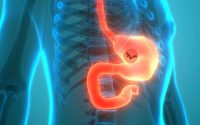Unlocking the power of our emotional memory: Neuroscientists show that its possible to turn the volume down on a negative memory by stimulating other, happier ones
You may not realize it, but each time you recall a memory — like your first time riding a bike or walking into your high school prom — your brain changes the memory ever so slightly. It’s almost like adding an Instagram filter, with details being filled in and information being updated or lost with each recall.
“We’re inadvertently applying filters to our past experiences,” says Steve Ramirez (CAS’10), a Boston University neuroscientist. Even though a filtered memory is different from the original, you can tell what that basic picture is for the most part, he says.
“Memory is less of a video recording of the past, and more reconstructive,” says Ramirez, a BU College of Arts & Sciences assistant professor of psychological and brain sciences. The malleable nature of memory is both a blessing and curse: it’s bad if we remember false details, but it’s good that our brains have the natural ability to mold and update memories to make them less potent, especially if it is something scary or traumatic.
So, what if it’s possible to use the malleable nature of our memories to our advantage, as a way to cure mental health disorders like depression and post-traumatic stress disorder (PTSD)? That is exactly what Ramirez and his research team are working to do. And after years of studying memory in mice, they’ve found not only where the brain stores positive and negative memories, but also how to turn the volume down on negative memories by artificially stimulating other, happier ones.
“Our million-dollar idea is, what if a solution for some of these mental disorders already exists in the brain? And what if memory is one way of getting there?” Ramirez says. In two new papers, he and his team demonstrate the power of our emotional memories and how our experiences — and the way we process them — leave actual physical footprints on the brain.
Mapping Positive and Negative Memories
One of the most important steps toward using memory to treat memory-related disorders is understanding where positive and negative memories exist in the brain, and how to distinguish between the two. Memories are stored in all different areas across the brain, and the individual memories themselves exist as networks of cells called engrams. Ramirez’s lab is particularly interested in the networks of memories located in the brain’s hippocampus, a cashew-shaped structure that stores sensory and emotional information important for forming and retrieving memories.
Source: Read Full Article


